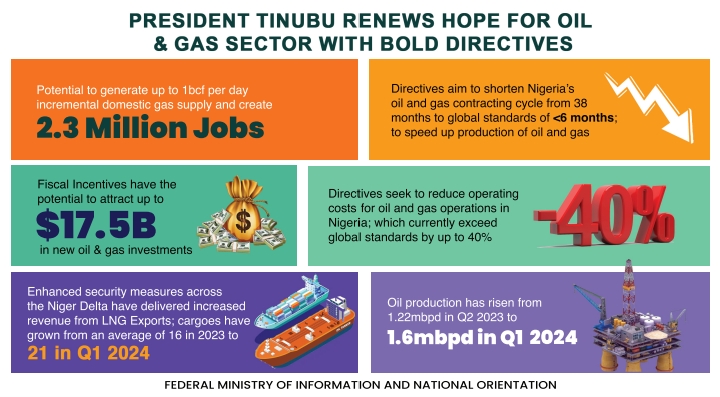Health
Sixteen (16) Ways Kissing Benefits Your Health
Is your relationship lacking in kissing? Do you tend to give “air kisses” instead of actual kisses when with your spouse? Do you feel uncomfortable when people goes in for a big kiss at family gatherings? It might be a good idea to start kissing more often!
Recent studies reveal that kissing can bring about a plethora of mental and physical advantages, making it worthwhile to indulge in.
Read on to discover what scientific research has to say about kissing:
1. It boosts your ‘happy hormones’
Kissing triggers your brain to release a cocktail of chemicals that leave you feeling oh so good by igniting the pleasure centers of the brain.
These chemicals include oxytocin, dopamine, and serotonin, which can make you feel euphoric and encourage feelings of affection and bonding. It also lowers your cortisol (stress hormone) levels.
2. Kissing helps you bond with the other person
Oxytocin is a chemical linked to pair bonding. The rush of oxytocin released when you kiss causes feelings of affection and attachment. Kissing your partner can improve relationship satisfaction and may be especially important in long-term relationships.
3. Kissing has a tangible impact on your self-esteem
In addition to boosting your happy hormones, kissing can reduce your cortisol levels — potentially improving your feelings of self-worth.
Researchers in one 2016 study found that participants who were unhappy with their physical appearance had higher cortisol levels.
Experiencing a temporary drop in cortisol each time you kiss isn’t a bad way to pass the time.
4. It also relieves stress
Speaking of cortisol, kissing also lowers cortisol levels and stress. Kissing and other affectionate communication, like hugging and saying “I love you,” impacts the physiological processes related to stress management.
5. It reduces anxiety
Stress management includes how well you handle stress and anxiety. There’s nothing quite like a kiss and some affection to help calm you. Oxytocin decreases anxiety and increases relaxation and wellness.
6. It dilates your blood vessels, which helps reduce your blood pressure
Kissing increases your heart rate in a way that dilates your blood vessels, according to Andrea Demirjian, author of the book, “Kissing: Everything You Ever Wanted to Know About One of Life’s Sweetest Pleasures.”
When your blood vessels dilate, your blood flow increases and causes an immediate decrease in your blood pressure. So this means that kissing is good for the heart, literally and metaphorically!
7. This can also help relieve cramps
The effect of dilated blood vessels and increased blood flow can help relieve cramps — a boost in feel-good chemicals and relief from period cramps? Getting your smooch on when you’re in the throes of a bad period might just be worth it.
8. Kissing soothe headaches
Kiss the “not tonight dear, I have a headache” excuse goodbye. That dilation of blood vessels and lowered blood pressure can also relieve headaches. Kissing may also help you prevent headaches by lowering stress, which is a known headache trigger.
9. It can boost your immune system
Swapping spit can boost your immunity by exposing you to new germs that strengthen your immune system. One 2014 study found that couples that kiss frequently share the same microbiota in their saliva and on their tongues.
10. It reduce allergic response
Kissing has been shown to provide significant relief from hives and other signs of allergic reaction associated with pollen and household dust mites. Stress also worsens allergic reactions, so kissing’s effect on stress may also reduce allergic response that way.
11. It’s tied to improvements in total cholesterol
One 2009 study found that couples who increased the frequency of romantic kissing experienced improvement in their total serum cholesterol. Keeping your cholesterol in check lowers your risk of several diseases, including heart disease and stroke.
12. It helps prevent cavities by increasing saliva production
Kissing stimulates your salivary glands, which increases saliva production. Saliva lubricates your mouth, aids in swallowing, and helps keep food debris from sticking to your teeth, which can help prevent tooth decay and cavities.
13. It’s a solid barometer for physical compatibility with a romantic partner
One 2013 study found that kissing may help you assess the suitability of a potential partner. According to women surveyed, a first kiss can basically make it or break it when it comes to her attraction.
14. Kissing a romantic partner boosts your sex drive
Romantic kissing leads to sexual arousal and is often the driving force behind a woman’s decision to have sex with someone. Saliva also contains testosterone — a sex hormone that plays a role in sexual arousal. The longer and more passionately you kiss, the more testosterone gets released.
15. The more you kiss, the more you tighten and tone your facial muscles
The act of kissing can involve anywhere from 2 to 34 facial muscles. Kissing often and using these muscles on the regular acts like a workout for your face — and neck if you’re really into it!
This may help firm up your facial muscles. Working out your facial muscles can also increase collagen production, which contributes to firmer, younger-looking skin.
16. It burns calories
Using those facial muscles also burns calories. You can burn anywhere from 2 to 26 calories per minute depending on how passionately you kiss. This may not be the best workout regime if you’re trying to lose weight, but it sure beats sweating on the elliptical trainer!
The bottom line
Kissing, regardless of whom you’re kissing, can have a positive impact on your emotional and physical wellbeing.
Kissing makes both parties feel good about themselves and can help strengthen relationships of all kinds, so kiss and kiss often. It’s good for you!
Health
Global Experts Tackle Stroke Management Crisis With Training In Asaba

Experts consider that stroke is a growing health crisis in Nigeria, affecting thousands of lives every year.
To tackle this challenge, the World Stroke Organization (WSO), Stroke Action Nigeria, Federal Medical Centre (FMC) Asaba, Asaba Specialist Hospital (ASH), and FMC Onitsha joined forces for an intensive four-day training program. Their mission? To equip healthcare workers with the skills to prevent, detect, and treat strokes more effectively.
The program brought together leading stroke specialists from around the world, including WSO President Prof. Jeyaraj Pandian, former WSO President Prof Sheila Martins, Dr. Rita Melifonwu, CEO of Stroke Action Nigeria and Board Member of the World Stroke Organisation, and other experts from Nigeria, India, Canada, Rwanda, and the UK. Through hands-on training and expert-led sessions, healthcare workers learned best practices for recognizing stroke symptoms, responding in emergencies, and providing life-saving care.
ALSO READ: 2027: Okpebholo Assures Tinubu With Snatch Of 17 LG Chiefs From PDP
Dr. Emmanuel Ezunu, Chief Consultant Neurologist at FMC Asaba, stressed the urgency of the training, saying, “Stroke is the leading cause of disability worldwide and the second leading cause of death. We all need to work together to reduce the burden of stroke. This training is a crucial step to ensure our health workers are well-equipped to handle every stage of stroke care.”
The training sessions took place simultaneously in multiple locations, including FMC and ASH in Asaba as well as in Onitsha, Anambra. Dr. Francis Ugoeze, Lead for the Research Study Recruitment and Implementation Team, warned about the rising risks among young people due to poor lifestyle choices. “It’s important to watch what we eat, avoid junk food, smoking, and hard drugs, and stay active,” he advised.
Dr. Melifonwu emphasized that stroke is not just a health crisis but a preventable one. “One in four adults over 25 is at risk. We need more awareness and lifestyle changes to reduce stroke cases,” she said. She also shared plans to establish ‘Life After Stroke’ centers in Nigeria, offering much-needed support for survivors, especially those struggling financially.
Dr. Chiamaka Okereke, a consultant neurologist and member of the research team, highlighted how these efforts are about more than just education—they’re about saving lives. “If more people recognize stroke symptoms early and seek medical help immediately, we can prevent many unnecessary deaths and disabilities,” she explained.
Experts at the event also called on the government to take action by increasing public awareness and investing in stroke care facilities. They emphasized the need for acute stroke units and post-stroke rehabilitation centers to provide patients with the care and support they need to recover.
This initiative represents a major step toward a future where stroke is no longer a leading cause of disability and death in Nigeria. With greater awareness, improved healthcare training, and better facilities, countless lives can be saved.
Health
Nigeria Strengthens Airport Screenings Amid Spread Of China’s HMPV Virus

The Nigerian government has increased surveillance at major international airports in response to the outbreak of Human Metapneumovirus (HMPV), recently discovered in China and now spreading to several countries, including India, Hong Kong, Malaysia, and Kazakhstan.
Port health officers have begun screening arriving passengers for symptoms of the virus, following a directive from the Minister of Health, Muhammad Ali Pate.
According to a source at Murtala Muhammad International Airport (MMIA), Lagos, “There is no cause for alarm as the Port Health Service has been mandated to start screening the passengers, and we are not taking anything to chance.”
The Human Metapneumovirus has sparked global concern after over 5,000 hospitalisations were reported in the United Kingdom due to respiratory infections linked to the virus.
READ MORE: Speed Darlington Sues IGP For N300M Over Unlawful Detention
The Nigeria Centre for Disease Control and Prevention (NCDC) has issued an advisory to monitor global developments in collaboration with the Ministry of Health and Social Welfare. Dr Jide Idris, Director-General of the NCDC, stated, “We aim to provide timely, accurate information and guidance to keep the Nigerian public informed and prepared.”
The agency also debunked rumours that the World Health Organization (WHO) had declared HMPV a Public Health Emergency of International Concern (PHEIC), urging the public to disregard such claims.
Screenings have commenced at key airports, including MMIA, Lagos, and Nnamdi Azikiwe International Airport, Abuja. Despite the heightened precautions, the Nigeria Civil Aviation Authority (NCAA) has yet to issue a formal circular to airlines on mandatory passenger checks.
The surge in respiratory infections globally has heightened pressure on health systems. In the UK alone, flu cases rose sharply over the holiday period, with over 5,000 hospitalisations reported by December 29, 2024. There has also been an increase in hospitalisations linked to COVID-19, norovirus, and RSV.
As global temperatures drop and respiratory infections continue to rise, Nigerian authorities remain vigilant, aiming to prevent the spread of HMPV within the country.
Health
Africa Leads Global Progress In HIV/AIDS Fight, Says WHO
Africa has made remarkable progress in reducing new HIV infections and AIDS-related deaths, according to the World Health Organization (WHO).
Dr. Matshidiso Moeti, WHO Regional Director for Africa, highlighted these achievements in her statement to mark this year’s World AIDS Day, themed “Take the Rights Path: My Health, My Right” on Friday.
READ ALSO: Atiku Gloats Over AUN’s Achievements Ahead Of 20th Anniversary
For the first time in 2023, the number of new HIV infections outside sub-Saharan Africa surpassed those within the region, underscoring Africa’s significant progress.
The continent is also a global leader in advancing the 95-95-95 UNAIDS targets aimed at ensuring 95% of people living with HIV know their status, 95% of those diagnosed are on treatment, and 95% of those treated achieve viral suppression.
“Seven countries have already achieved the targets, with the overall rating for the region currently at 90-82-76,” said Dr. Moeti. “About 21.3 million people are now on antiretroviral treatment, raising their life expectancy.”
Botswana and Namibia were recognized for achieving significant milestones in preventing mother-to-child HIV transmission, earning silver and bronze tier statuses, respectively, under WHO’s Path to Elimination of HIV initiative.
African countries are also adopting innovative prevention methods, including oral and long-acting injectable pre-exposure prophylaxis (PrEP) and the dipivefrine vaginal ring.
Dr. Moeti stressed that while these tools are vital, their impact depends on accessibility.
“The value of these innovations depends on their universal accessibility,” she stated, emphasizing the need for investments and policy reforms.
Dr. Moeti called for an end to stigma and discrimination, which she said continue to hinder progress.
“We have a collective obligation to protect human rights, specifically ensuring that health care is available to everyone, without any discrimination, regardless of their HIV status, background, gender, or where they live. Stigma and discrimination cannot be allowed to undermine the gains and impede our progress.”
While celebrating these advancements, Dr. Moeti noted that disease outbreaks across the region pose a challenge to already overburdened health systems.
She emphasized the importance of strong, integrated, and person-centered health care systems to meet the needs of vulnerable populations.
“Let’s take this opportunity today to acknowledge the progress, but to also renew our joint commitment to eliminating HIV.
By protecting everyone’s right to health, and reducing new HIV infections, we can achieve an AIDS-free generation and ensure the sustainability of the HIV response,” she urged.
Dr. Moeti also highlighted the crucial role of communities in shaping strategies to eliminate barriers to care.
“We must ensure their voices are heard,” she said, emphasizing that the collective efforts of governments, partners, civil society, health care providers, and communities are essential in the fight against HIV/AIDS.












